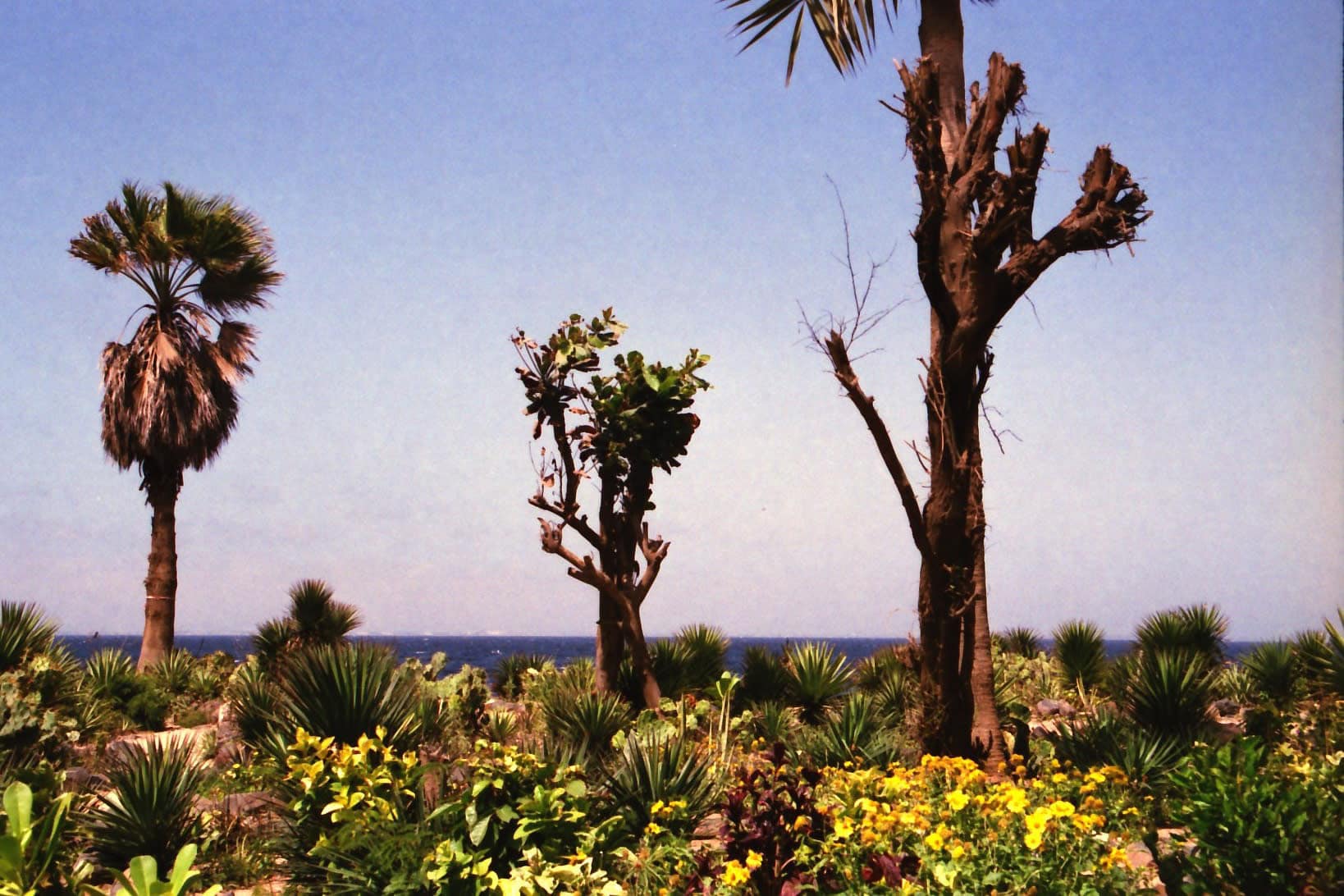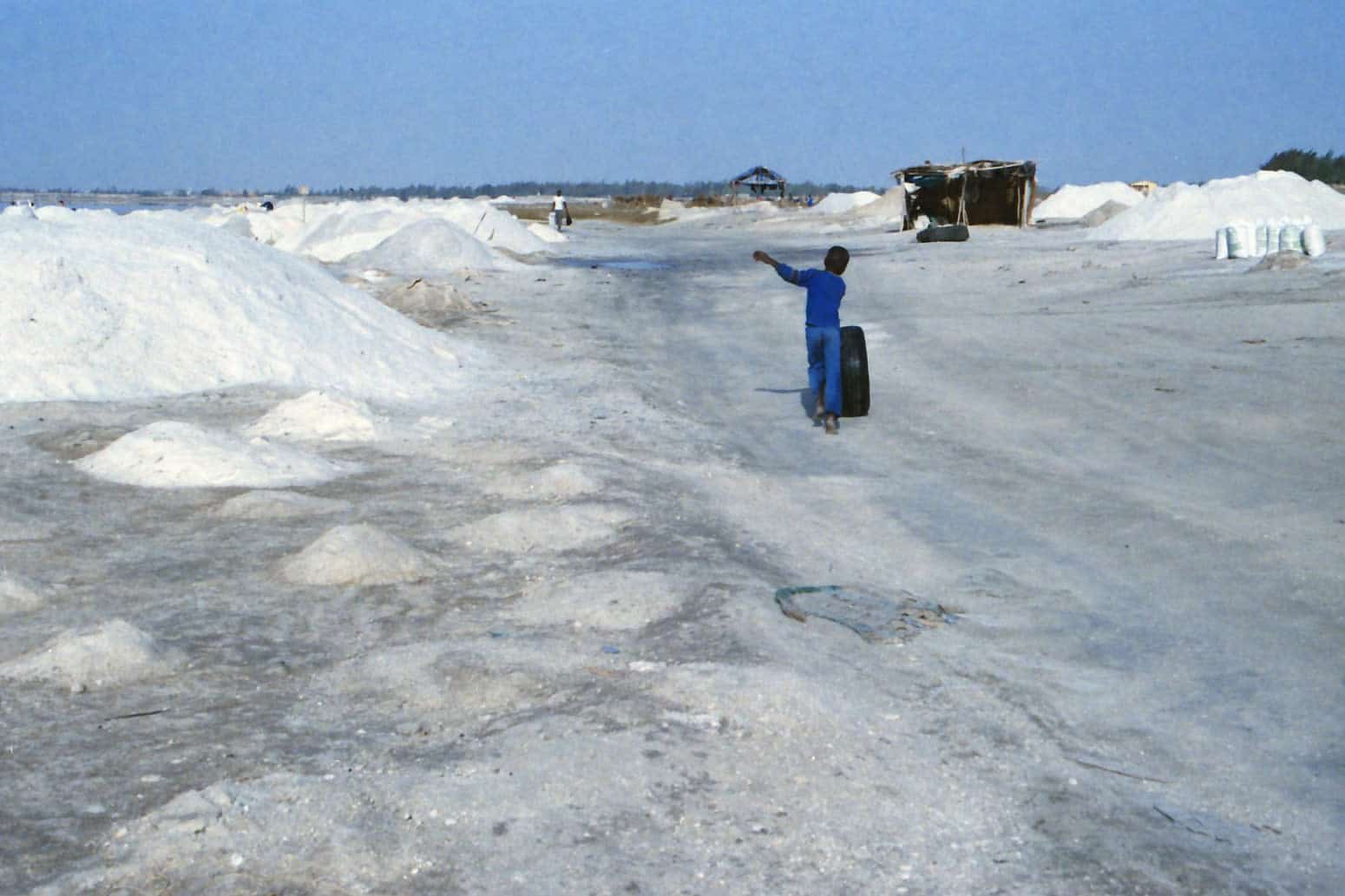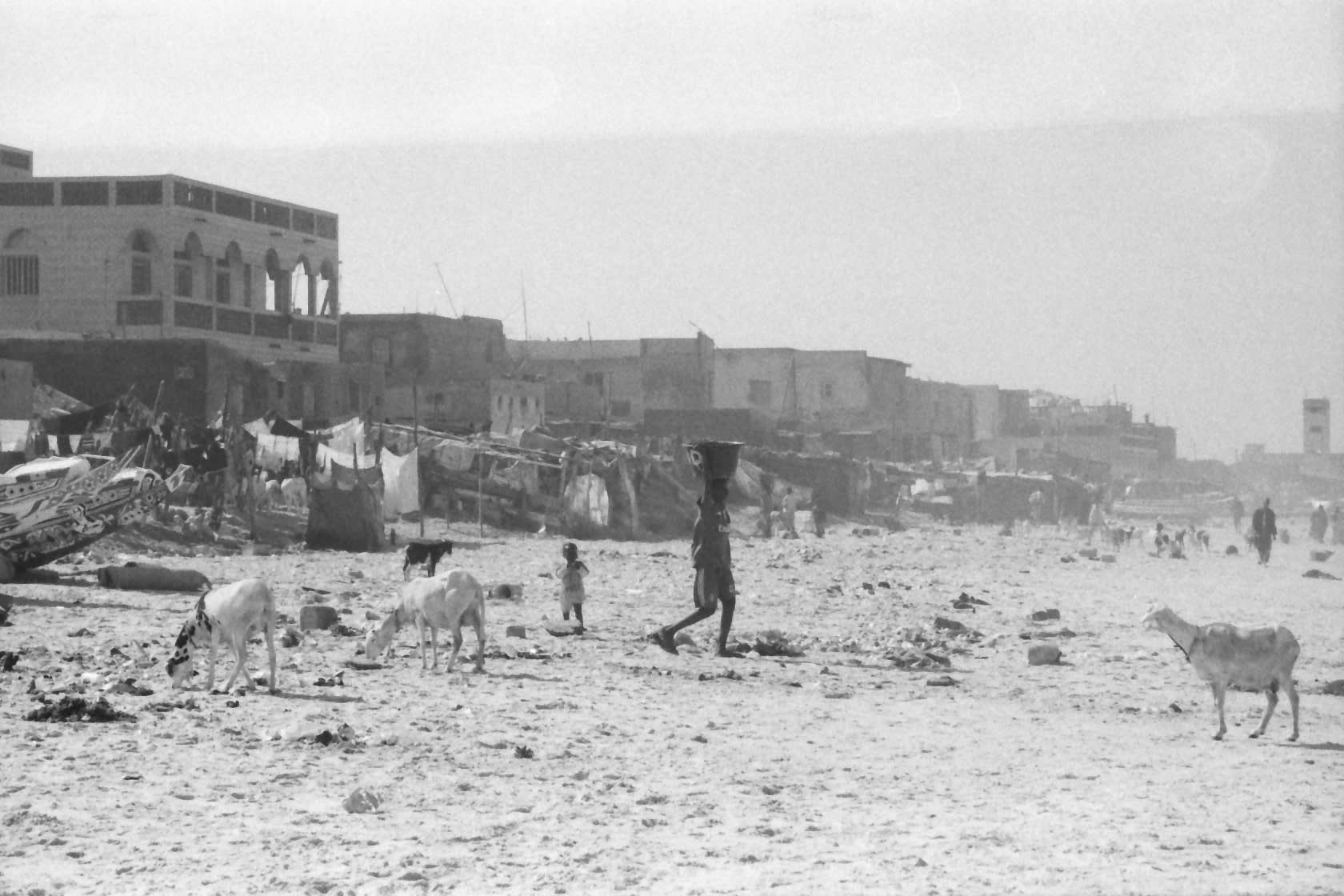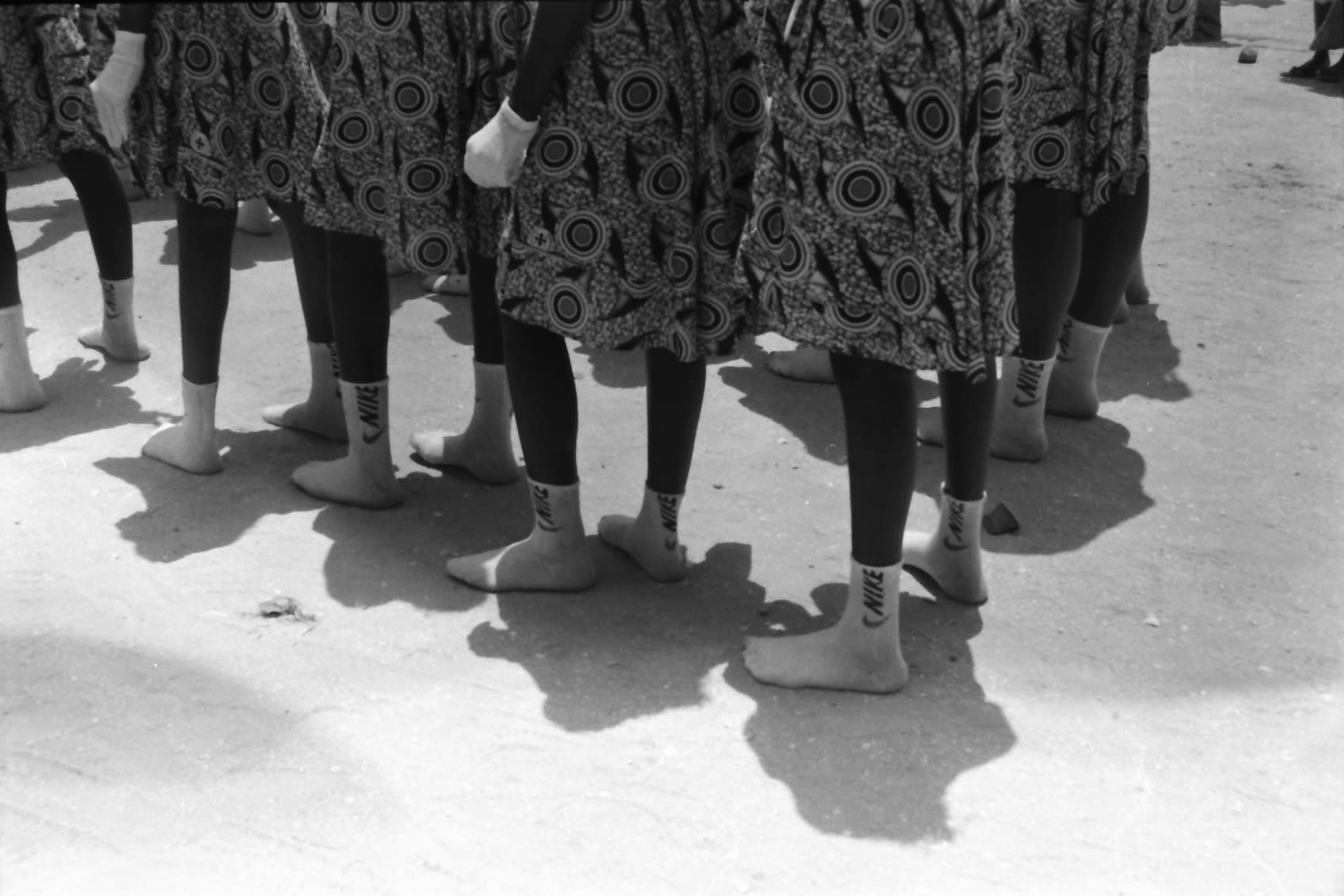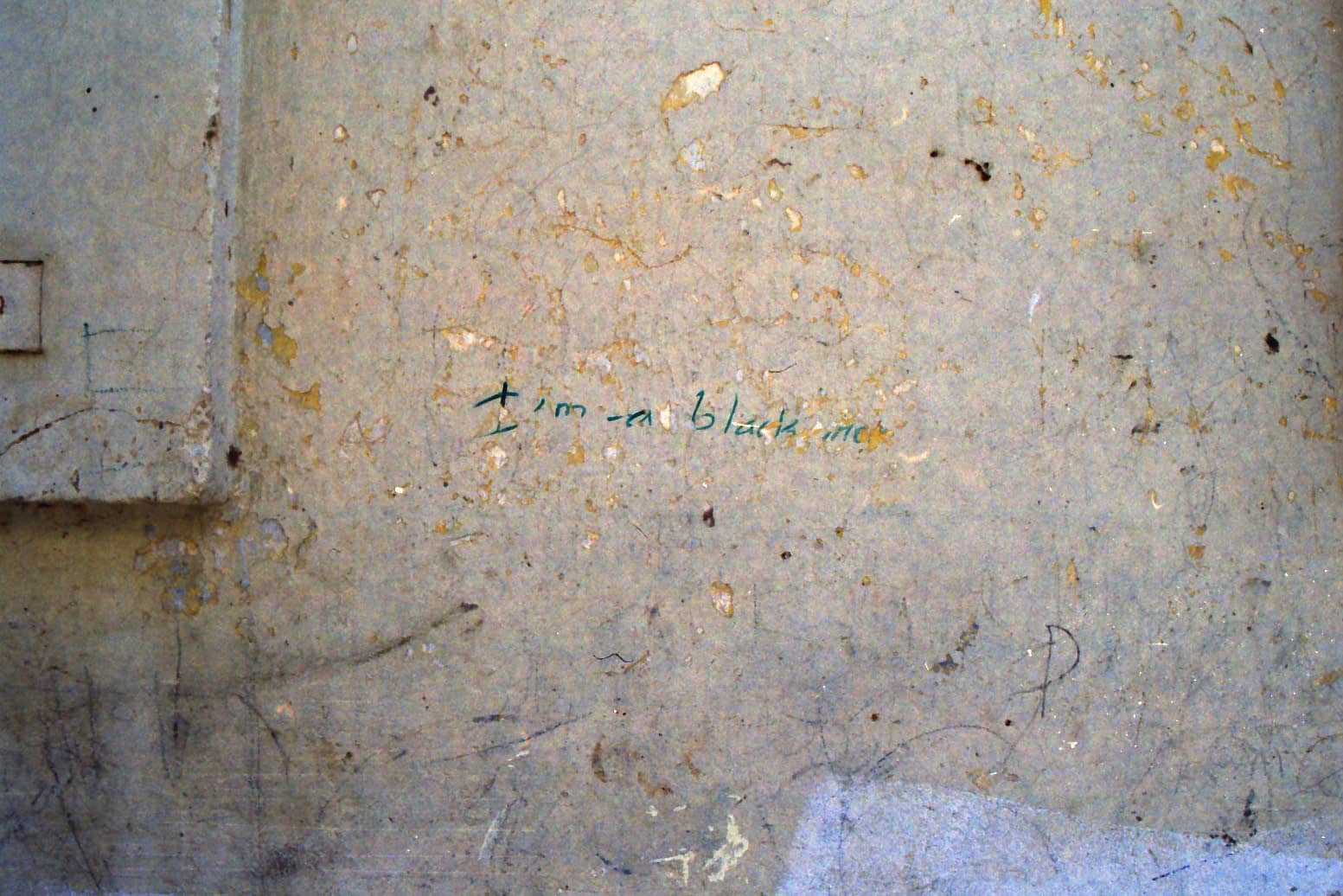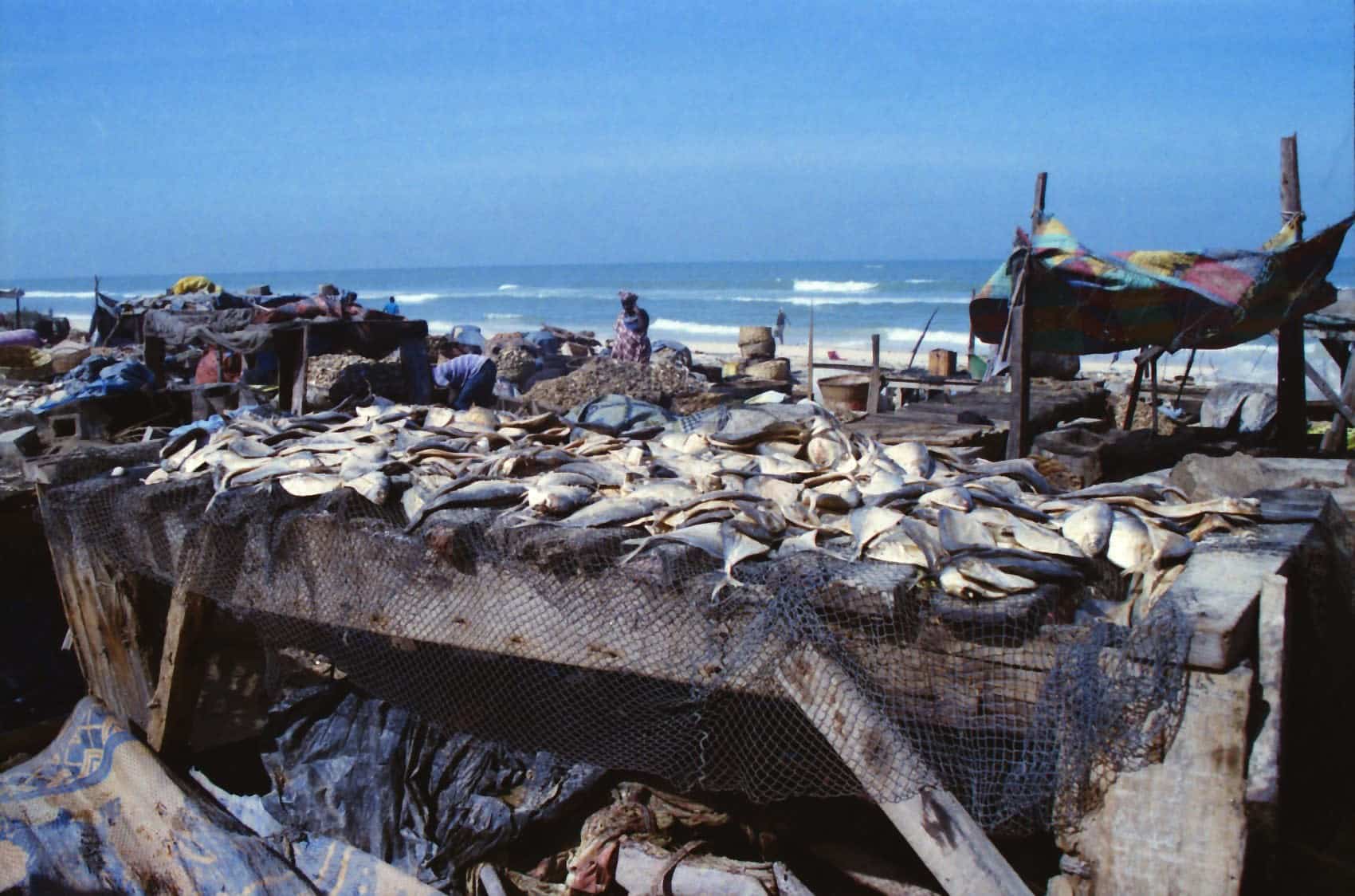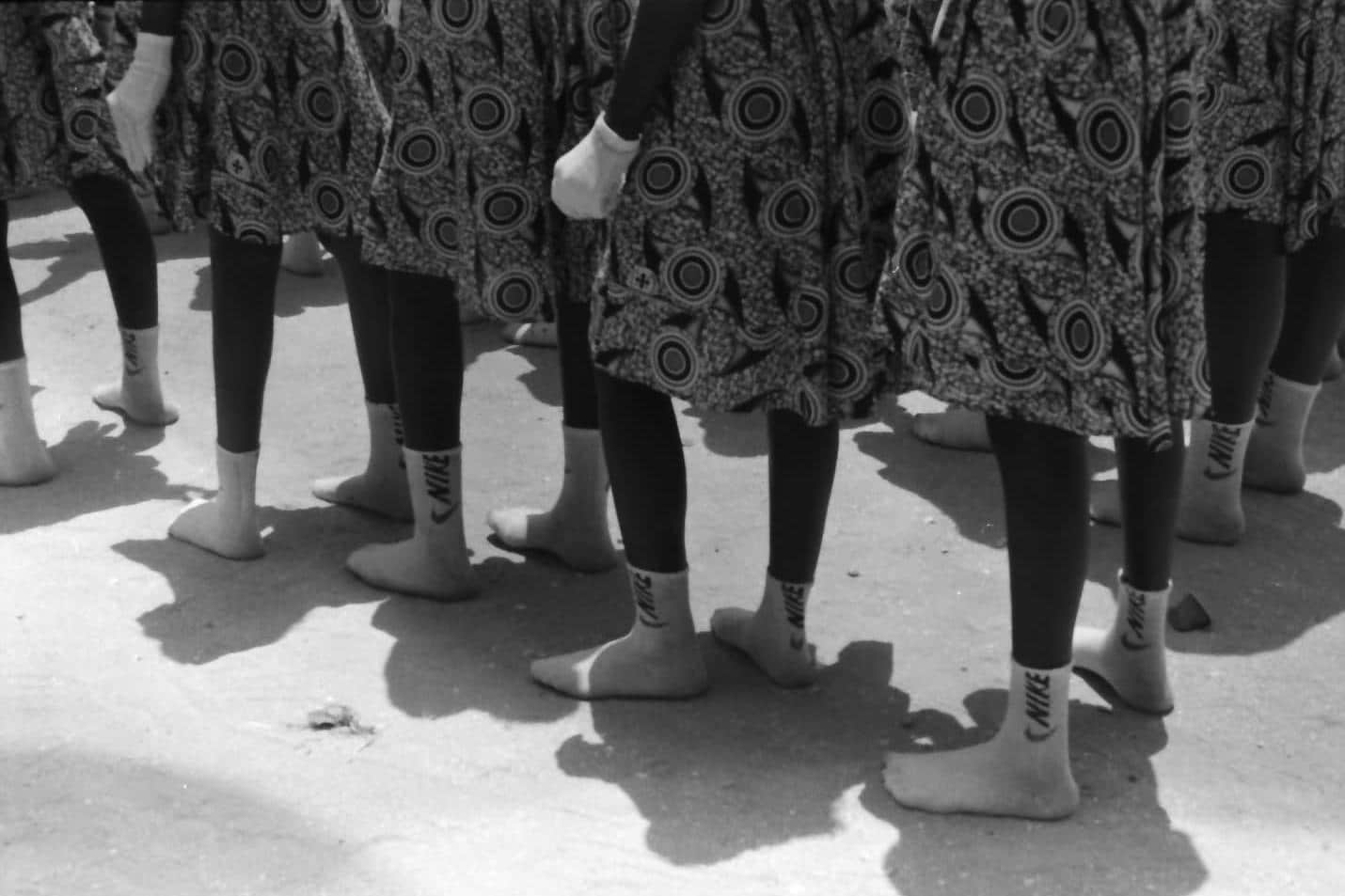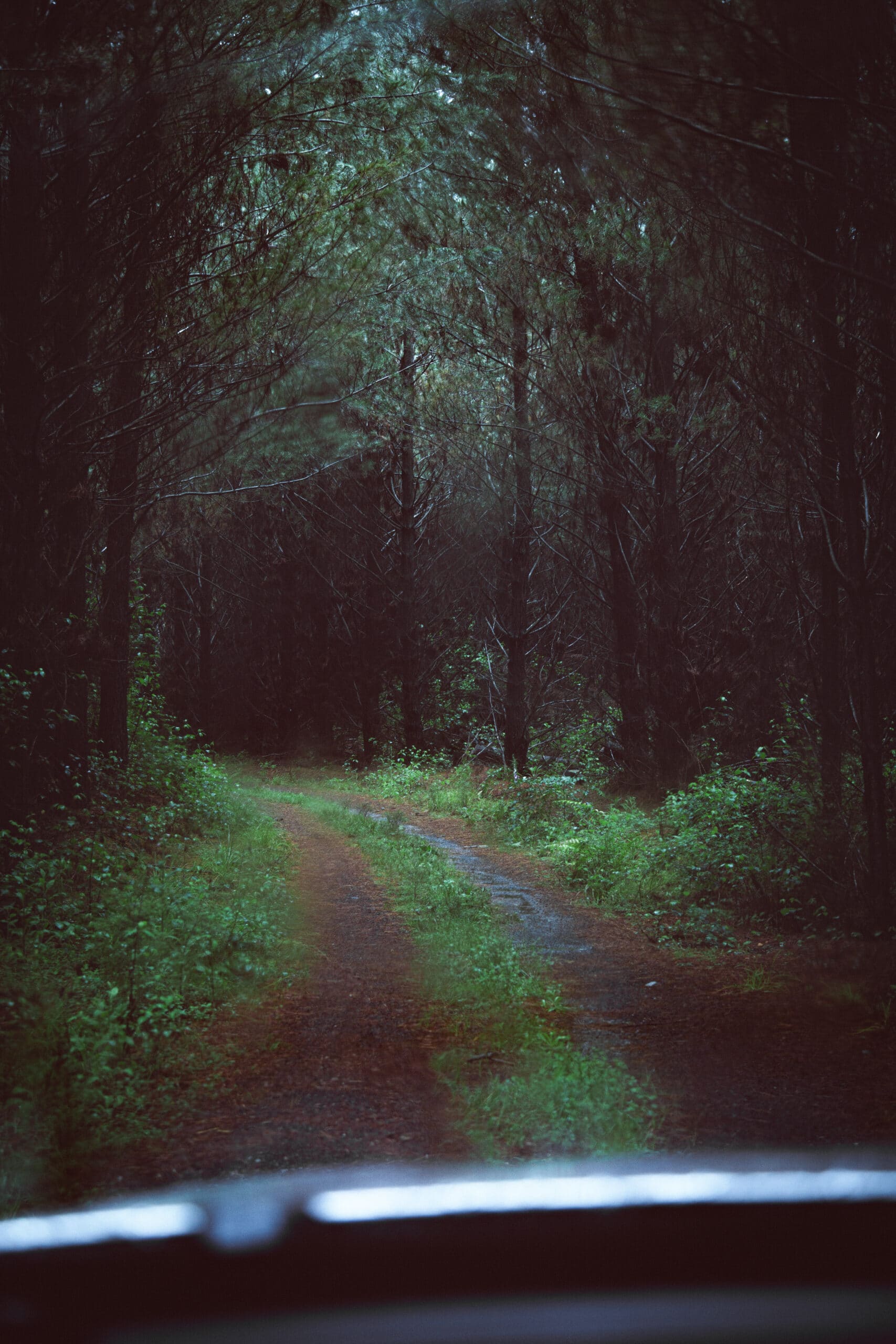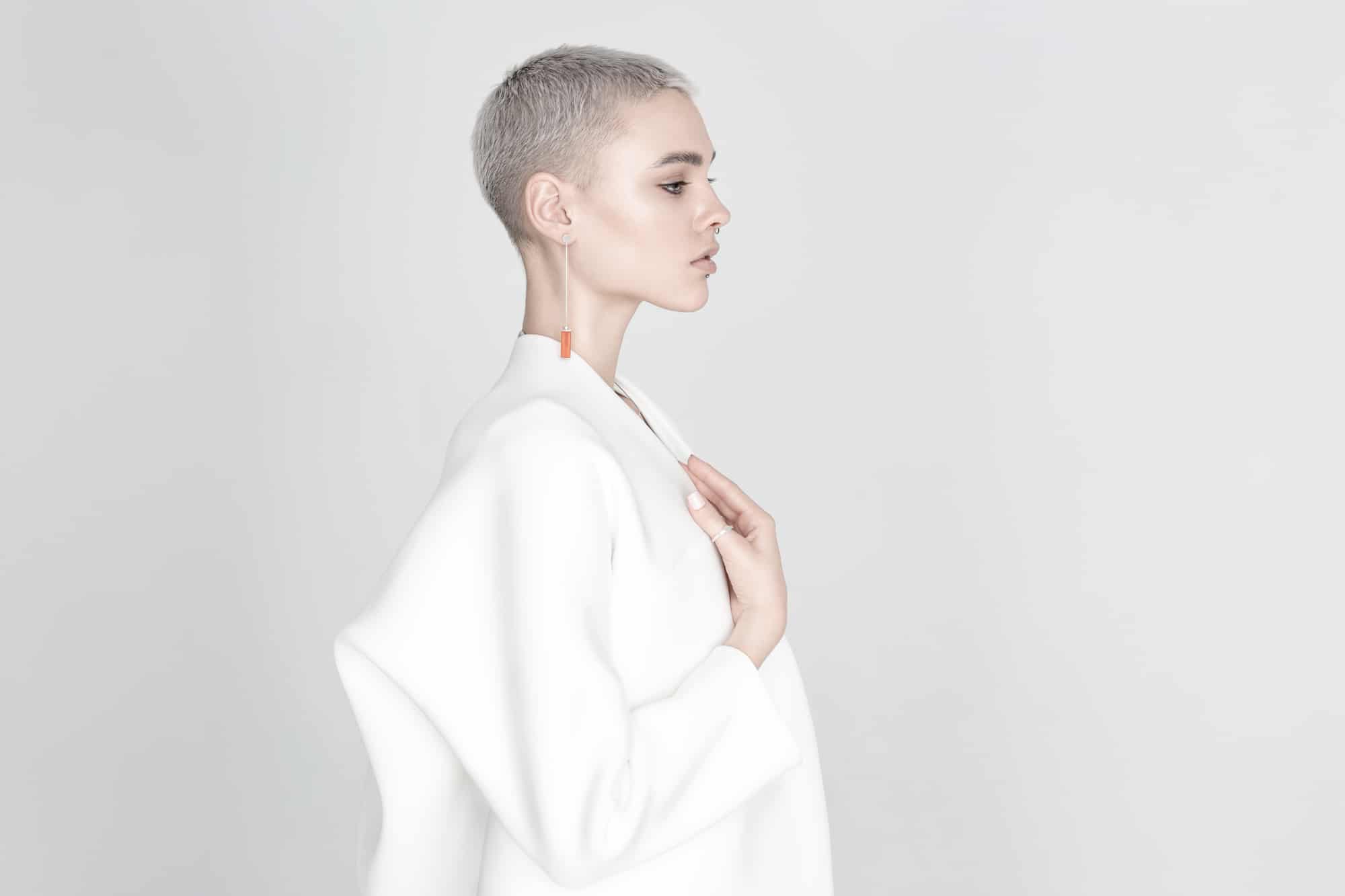J'ai passé deux mois dans une résidence d'artistes sur l'île de Saint-LouisSénégal. Mon objectif premier était de photographier un pays qui m'avait fasciné depuis l'enfance. Cela s'est avéré beaucoup plus difficile que je ne le pensais, et l'expérience a remis en question mes perceptions de la photographie d'une manière qui a changé ma vie.
Saint-Louis est la deuxième ville la plus peuplée du Sénégal, après Dakar, la capitale du pays. Elle se trouve sur la côte occidentale de l'Afrique, près de l'embouchure du fleuve Sénégal, dernière étape avant l'océan Atlantique. La ville elle-même est une fête de couleurs et une décomposition de la chaleur et de l'humidité. C'est une démonstration du colonialisme qui s'estompe tranquillement pour révéler une culture africaine ancienne, étouffée et profondément enracinée.
Elle est pleine de gens qui se battent entre ce qui est ancien et ce qui est nouveau, entre ce qui est mort et ce qui accumule de la force pour la vie. Une communauté au milieu d'un lien métaphysique et d'un démêlage nécessaire à partir d'espaces sélectifs et de différents points dans le temps. Une île en transition qui s'accroche à ses traditions, mais surtout un lieu au-delà de la merde et du désir.
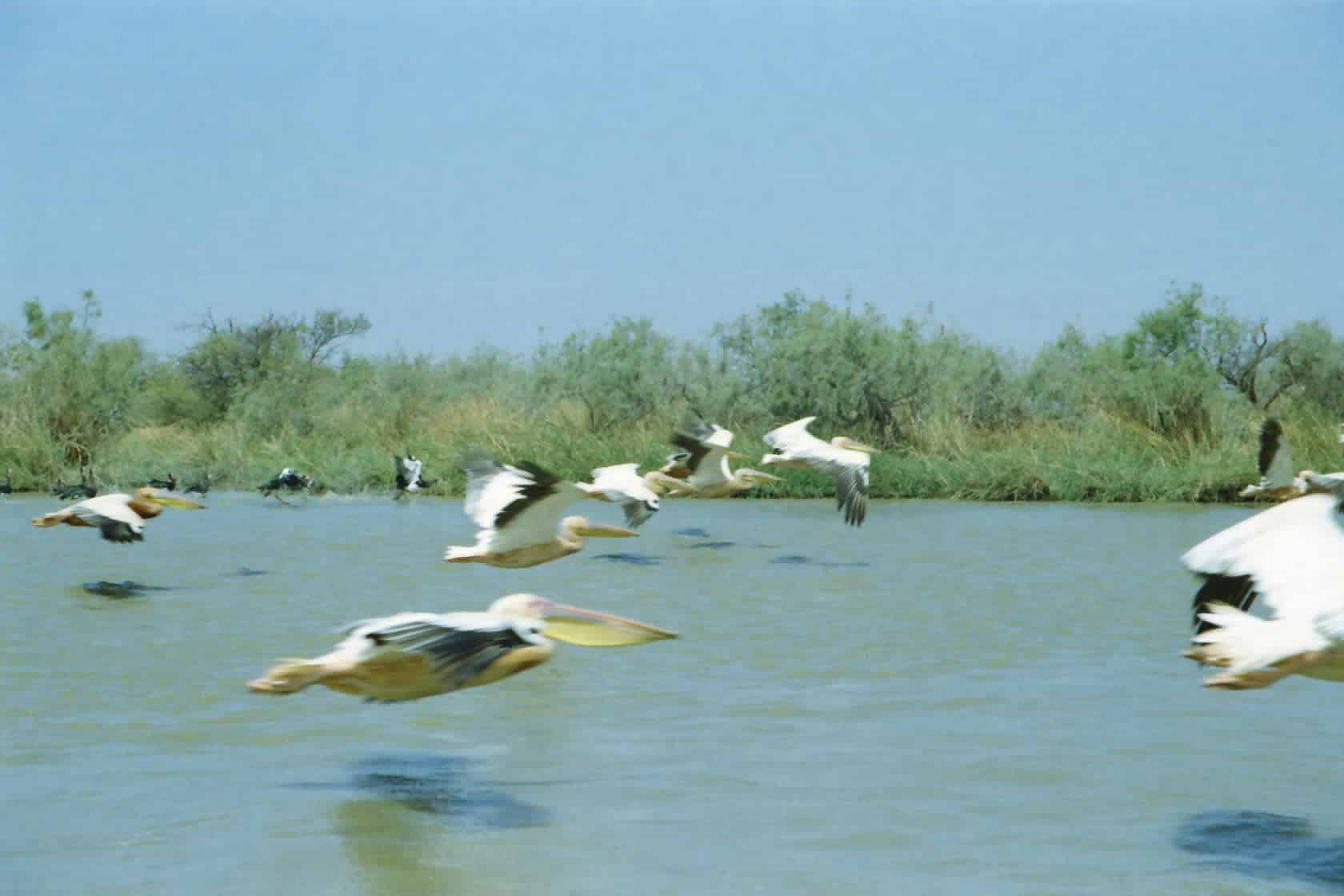
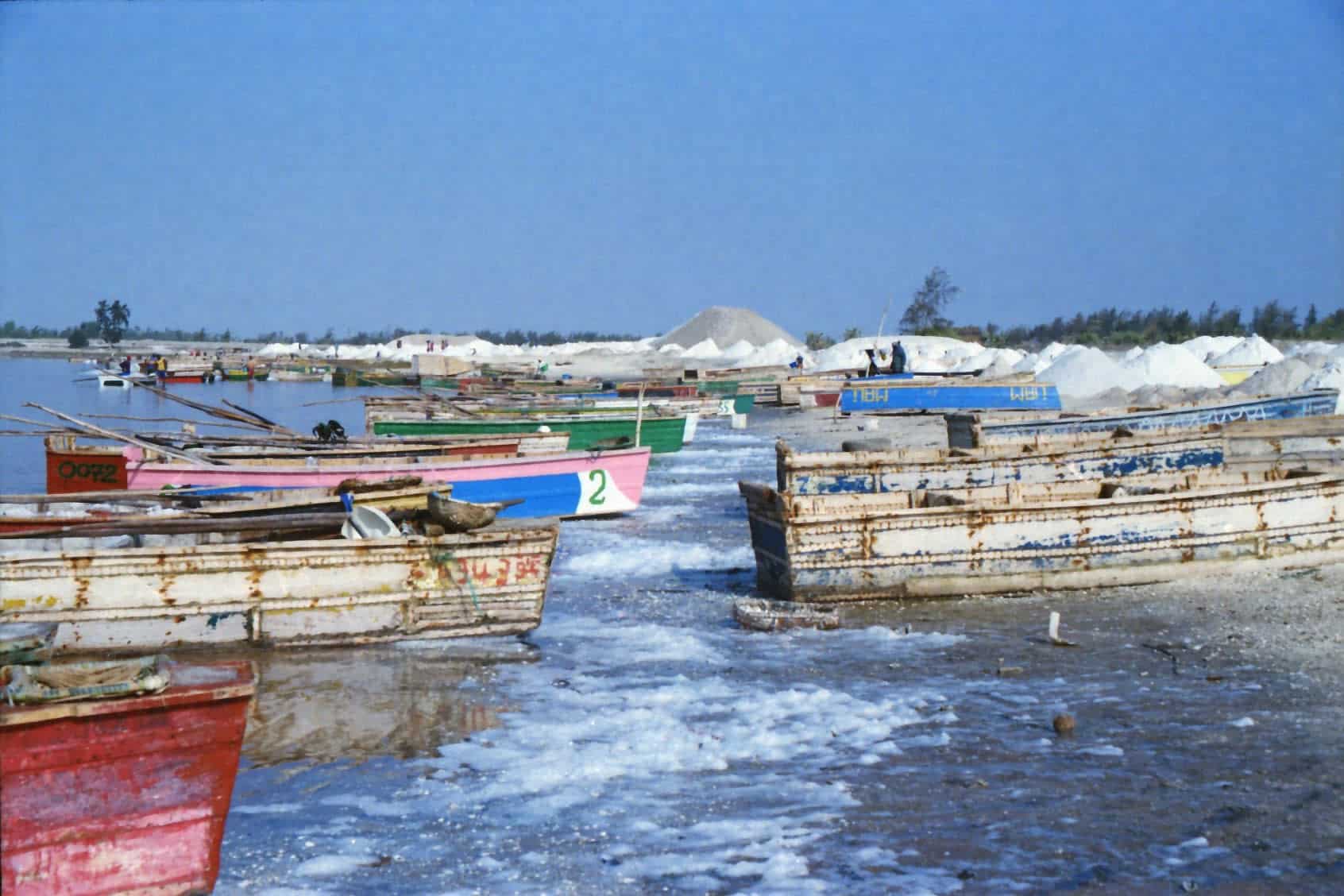
En photographiant Saint-Louis, j'avais oublié le mépris écrasant des Sénégalais pour les photographes. On ne peut pas nous faire confiance. Les Européens ne sont pas dignes de confiance. Et je ne peux pas les blâmer. Au fil des siècles, les Européens ont acquis une mauvaise réputation, c'est le moins que l'on puisse dire. C'est une chose que je ne pouvais pas contester.
Je me souviens de la première image que j'ai tenté de capturer lors de ma visite. J'étais sur un pont, allant de Saint-Louis à Ndar Ndar, et j'ai sorti mon appareil photo de ma poche. Tout autour de moi, j'entendais : ""TOUBAB, DEETDEET !"qui se traduit littéralement par "PERSONNE BLANCHE, NON !".
Soudain pris de honte, j'ai rangé mon appareil photo et ce qui m'a suivi, c'est le bruit collectif des gens qui omettent de prendre une photo. tsk tsk Un homme m'a même fait un signe du doigt très désapprobateur.
J'avais voulu photographier le bateau d'un pêcheur sur la rivière, sous le pont, mais il n'y avait personne dessus, il n'y avait rien de sacré. Je ne comprenais pas pourquoi on me faisait honte. Être photographe, c'est être voyeur, il y a une grande part de perversion. Je considère mon appareil photo comme une cape : lorsque je me tiens derrière cet objet, je suis complètement transparent, mais ce n'est que la narration de mon imagination poétique. Je suis aussi visible que mon sujet.
Être photographe, c'est être voyeur, il y a une grande part de perversion.
Le mépris pour le cinéma et la photographie dans cette région découle de décennies de fausse documentation. Peu de touristes visitent la région, à l'exception des Occidentaux qui traversent une crise de quart ou de milieu de vie et qui partent en croisade en Afrique de l'Ouest pour "aider" ceux qu'ils considèrent comme "malheureux". Il y a aussi les Espagnoles qui s'adonnent à l'industrie florissante des gigolos masculins. Les premières sont les principales responsables de cette fausse perception selon laquelle le Sénégal est une nation inférieure construite, un pays du tiers monde.
Le Sénégal n'est ni meilleur, ni pire, juste différent. C'est tout. Il ne sert à rien de s'attarder sur la pauvreté ou la pollution, elles sont partout. Je n'ai jamais compris pourquoi on voulait se focaliser uniquement sur un paysage abîmé ou une terre promise alors que le pouls battant se nourrit du juste milieu. Je pense toujours à La photo de Meliha Varesanovic prise par Tom Stoddart comme la meilleure photo de guerre jamais prise ; il n'y a pas de sang, pas de larmes, seulement la fierté d'une femme. Un fragment honnête.
C'était mon objectif : collecter des images fragmentées de détails singuliers dans un environnement chaotique. Je voulais créer une mémoire fictive basée sur des vérités qui murmuraient des secrets autour de moi. Chris Marker a écrit : "J'aurai passé ma vie à essayer de comprendre la fonction du souvenir, qui n'est pas le contraire de l'oubli, mais plutôt sa doublure. On ne se souvient pas, on réécrit la mémoire comme on réécrit l'histoire. Comment se souvenir de la soif ?
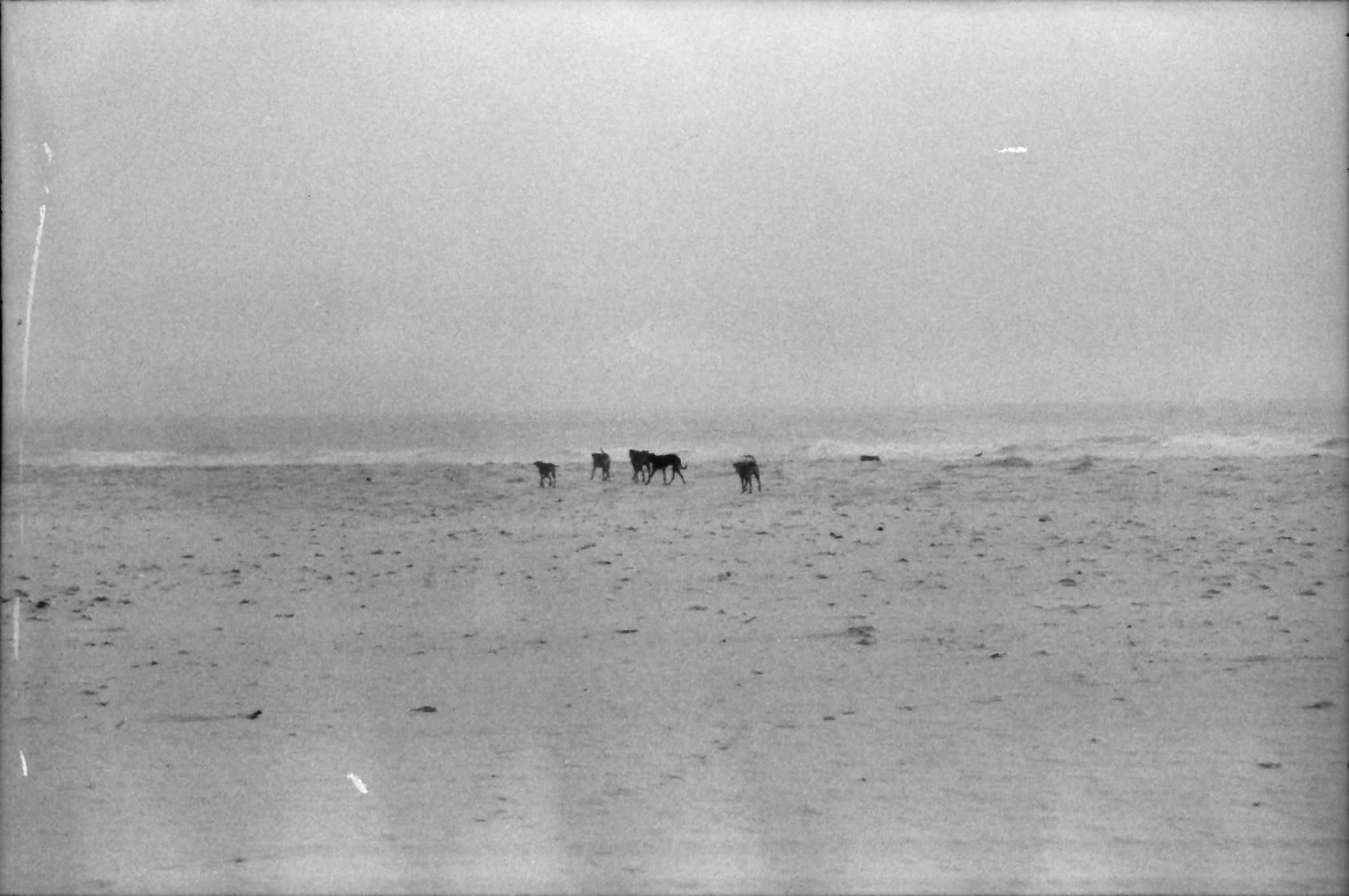
J'aurai passé ma vie à essayer de comprendre la fonction du souvenir, qui n'est pas le contraire de l'oubli, mais plutôt sa doublure.
Je me souviens avoir pris une photo d'une meute de chiens sauvages longeant le rivage de l'Atlantique, une sorte de vision de la liberté. Quelques instants après avoir pris cette photo, la meute de chiens s'est précipitée sur l'une de mes amies, l'a encerclée et l'un d'eux lui a transpercé le muscle du mollet. Elle avait des bleus et saignait, mais elle tenait tellement à nager dans l'océan ce jour-là qu'il nous a fallu une heure pour la convaincre de consulter un médecin.
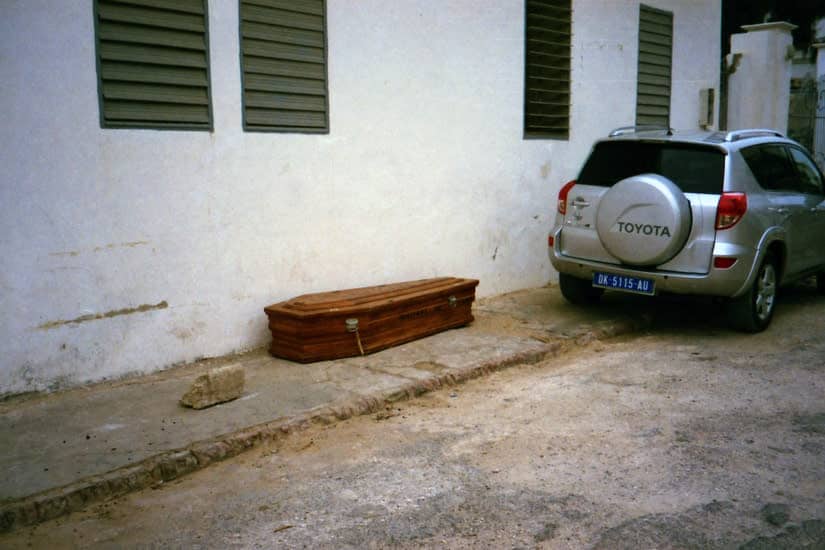
Au Sénégal, l'un de mes actes de mémoire préférés est une photo que j'ai prise d'un cercueil posé sur le bord de la route à côté d'une Toyota argentée. Il y avait un tas d'ordures sur le côté gauche du cercueil, mais je l'ai omis dans mon cadre. Une fois photographiée, une jeune fille de 16 ans est sortie de sa maison et m'a dit que sa voisine était décédée dans des circonstances mystérieuses la nuit précédente dans son sommeil. Les membres de la communauté préparaient le corps pour l'enterrement. Elle m'a invité à entrer chez elle et nous nous sommes assis dans la cour avec sa sœur aînée, l'une des plus belles femmes que j'aie jamais vues. La jeune fille est allée dans sa chambre, a sorti une petite pile de livres et m'a lu des passages écrits par son auteur préféré. Elle m'a raconté l'histoire de son petit ami, qu'elle avait caché au reste de sa famille depuis trois ans, et une fois, plus tôt dans l'année, où elle avait été envoyée à l'hôpital pour être soignée d'une maladie qu'elle avait inventée uniquement pour se soustraire à un examen scolaire. C'était intrinsèquement doux. Il y avait quelque chose d'innommable, quelque chose de si parfait dans ce moment, mais l'image la plus vive que j'ai de cet après-midi est celle d'un cercueil et d'une Toyota en argent.
Mon expérience photographique au Sénégal m'a conforté dans l'idée que la photographie est autant une fausse documentation de l'histoire que le mot écrit, que l'on ne peut pas lire en dehors des lignes tout comme on ne peut pas voir en dehors du cadre. Vous pouvez l'imaginer, vous pouvez détruire et créer des mondes. On peut superposer une illusion à une autre, mais la vérité est toujours plus étrange ou moins bonne que la fiction.
Retrouvez d'autres photographies de Sonia D'Argenzio sur son portfolio, construit à l'aide de Format.
